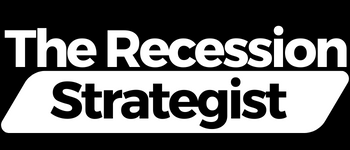“Hyperinflation presents numerous challenges for small-town restaurants, but it also offers opportunities for those who have the ability to adapt quickly to change.”
This article, “Navigating Hyperinflation: How Small Town Restaurants Can Thrive in Turbulent Economic Times,” provides practical tips for small-town restaurants to succeed during hyperinflation. The article emphasizes that, while challenging, hyperinflation can be an opportunity for restaurants that are willing to adapt and innovate.
Hyperinflation can wreak havoc on a nation’s economy and the livelihoods of its citizens. However, history has shown that even in such trying times, some businesses manage to not only survive but also thrive by adapting to the rapidly changing economic environment. In this article, we will explore how small-town restaurants can apply strategies used by successful entrepreneurs during past hyper-inflationary periods to ensure their businesses continue to flourish.
Investing in Hard Assets
During hyperinflation periods, money’s value rapidly diminishes, making tangible assets more attractive. Small-town restaurants can protect their wealth and secure their future by investing in real estate. During the 1920s Weimar Republic hyperinflation in Germany, some businesses purchased property as a hedge against the depreciating currency. Restaurants can follow a similar strategy, acquiring real estate to expand their premises, create new income streams, or simply hold onto as a valuable asset.
Foreign Currency Investments
In times of hyperinflation, holding or trading in foreign currencies can help businesses maintain their purchasing power. For example, during Zimbabwe’s hyperinflation crisis in the late 2000s, many businesses, including restaurants, started to accept foreign currencies like the U.S. dollar or South African rand. Small-town restaurants can open foreign currency accounts to protect their earnings, pay for imported goods, and potentially benefit from favorable exchange rates.
Import/Export and Local Sourcing
In a hyperinflation environment, businesses that import goods at lower costs in stable foreign currencies and sell them for higher prices in the local currency can profit significantly. Restaurants can import essential ingredients, kitchen equipment, or other necessary items in bulk to save on costs. Additionally, they can explore exporting their culinary products, such as specialty sauces or packaged meals, to other countries.
On the other hand, focusing on locally sourced ingredients can help reduce reliance on imports, create stronger relationships with local suppliers, and support the regional economy. For instance, during Argentina’s economic crisis in 2001, many businesses turned to local producers, allowing them to continue operating despite the currency collapse.
Niche Services and Products
Restaurants can differentiate themselves by offering unique and valuable services or products that cater to their clientele’s specific needs during hyperinflation. For example, during Venezuela’s ongoing hyperinflation crisis, some restaurants have introduced special promotions or payment options, such as discounts for customers who pay in foreign currency or cryptocurrencies.
One strategy is to focus on affordable, hearty meals that appeal to the local population struggling with the economic situation. Alternatively, restaurants can target the more affluent segment of society by offering a luxurious dining experience, thereby capturing a niche market willing to spend on high-quality food and service.
Flexible Pricing and Cost Management
In a hyper-inflationary environment, prices can change rapidly. Small-town restaurants must adapt their pricing strategies to reflect these fluctuations while remaining competitive. Regularly updating menu prices, offering dynamic pricing based on demand, or implementing a barter system can help businesses stay afloat during turbulent times.
At the same time, it is essential to manage costs effectively. Streamlining operations, reducing waste, and renegotiating contracts with suppliers can help restaurants maintain their margins even when prices are rising rapidly. Utilizing technology and data analysis can further optimize the business’s performance and cost management strategies.
Community Engagement and Collaboration
Building strong relationships with the local community can help small-town restaurants weather the storm of hyperinflation. By supporting local charities, hosting events, and collaborating with other businesses, restaurants can foster goodwill and strengthen their reputation as a valuable part of the community. In turn, this can lead to increased customer loyalty and patronage.
Moreover, partnering with other businesses can create synergies that benefit all parties involved. For example, a restaurant might collaborate with a local brewery to create a unique beer and food pairing menu or work with nearby farms to source fresh, seasonal ingredients.
Adaptability and Innovation
Adapting and innovating is crucial for any business, but it is particularly essential during hyper-inflationary periods. Small-town restaurants should be prepared to pivot their business model, menu offerings, or marketing strategies as needed to respond to the evolving economic situation.
Embracing new technologies and digital platforms can help businesses stay ahead of the curve. For instance, implementing online ordering, delivery services, or contactless payment options can make it easier for customers to patronize the restaurant while minimizing the impact of economic turbulence.
Hyperinflation presents numerous challenges for small-town restaurants, but it also offers opportunities for those who have the ability to adapt quickly to change.










